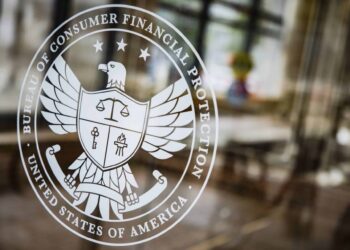The Next TCPA Battle

The Telephone Consumer Protection Act of 1991 (TCPA) was a well-intentioned and early attempt to limit the number of telemarketing calls consumers receive. Among other things, it restricts telephone solicitations (i.e., telemarketing) and the use of so-called “autodialers.” Over the years, it’s been a challenge to determine what equipment is an autodialer and what isn’t.
The statute defines an autodialer as equipment that has the capacity to store or produce telephone numbers to be called, using a random or sequential number generator; and to dial such numbers. The Federal Communications Commission rule implementing the TCPA says the same thing (and always has).
While the FCC has broadened the definition to the point of incredulity over the years, the D.C. Circuit Court of Appeals issued an opinion on March 16 — ACA International v. FCC. The issued opinion reels in the FCC’s creative interpretation, but fails to answer the critical question necessary to determine whether a device is an autodialer for TCPA purposes, i.e., whether a device is an autodialer regulated under the TCPA (thus subjecting users to potential liability) based on how one actually used it to make a call or send a text, or by what it was capable of doing at the time it was used.
A little background may be helpful. In 2003, the FCC exercised its authority to consider changes in technology by turning its attention to so-called “predictive dialers.” The FCC reasoned that the early days of random or sequential dialing had been replaced by equipment that could upload large lists of phone numbers to be dialed automatically. The FCC asserted that failure to regulate a predictive dialer as an autodialer would lead to an unintended result. Ironically, this view led the FCC ultimately to view smartphones as “autodialers” — an unintended consequence of the highest order.
It gets better. In 2008, the FCC ratified an earlier statement that, under its TCPA autodialer standard, what matters is whether the equipment or device is capable of dialing without human intervention. This interpretation took on even greater significance in 2012, when the FCC created a new, stricter consent standard for advertising messages that were sent using an autodialer.
The FCC’s expanding interpretation of what constituted an autodialer meant that a wider range of advertising calls and texts would be subject to astandard requiring a signed, written consent from the consumer. Companies could no longer rely on an established business relationship to market to their customers using the increased efficiencies of autodialing equipment.
In 2015, the FCC fumbled away a great opportunity to provide clear standards on the definition of an autodialer. Among other things, the FCC made the stunning announcement that a rotary phone is not an autodialer. Second, the FCC passed on the chance to declare that smartphones were not autodialers (it observed that consumers didn’t seem to be suing each other over routine smartphone uses). Third, the FCC introduced the concept of “potential functionalities” (i.e., what it could do in the future if it were reconfigured or reprogrammed) when considering a device’s “capacity.”
It is no wonder this analytical trainwreck got the FCC sued, culminating in the D.C. Circuit Court of Appeals March 16 decision in the ACA International case. The court was unimpressed by the FCC’s 2015 autodialer reasoning. It rejected any interpretation that could subject smartphones to regulation as TCPA autodialers, seeing this as an unintended consequence on a massive scale that the FCC could have avoided.
The court also thumbed its nose at the FCC’s “potential functionalities” construction. Brisk rejection of the FCC’s 2015 analysis seemed to be building to a sweet and satisfying conclusion, until it became clear that the court was not going to opine whether the use or capability of a device determines whether it is an autodialer for TCPA purposes.
Textually, one can argue that the statutory language focused on a device’s “capacity” leads to the conclusion that it is what the device is capable of, as opposed to how it was used. In the real world, this distinction unfolds all the time in companies that have a unified telecommunications system. For example, a company may have an autodialer its agents might be connected to for all communications — from payment reminders (which are subject to a lower TCPA consent standard) to product marketing calls (which, if made with an autodialer, require prior written consent from the party being called.)
The device allows agents to use the dialer’s predictive capacity when permitted — e.g., for payment reminders — but not for marketing contacts. Under a textual argument, an agent’s manually dialed marketing calls and texts made with the unified telecommunications system trigger the strict “prior written consent” standard because the system has the “capacity” to operate as an autodialer.
On the other hand, one can argue that a consumer contacted by a device that has predictive dialing capabilities but which were not used in making the call suffered no compensable injury and thus lacks standing to sue.
Congress could not possibly have intended the TCPA to effectively encompass the majority of communication devices in use today. Further, it could not have conceived in 1991 that smartphones would even exist, much less conceive of them to be as ubiquitous as they are. In order to achieve the intent of the TCPA, one must read into the textual argument that “capacity” implies “use.”
The D.C. Circuit may have handed the battle to the industry, but the war is not yet won. The tension between “capacity” and “use” will be the next big battle on the TCPA front, absent Congress stepping in to update the law.
Sure, that will happen.
Michael Benoit and Michael Goodman are partners in the Washington, D.C., office of Hudson Cook LLP. Benoit is a frequent speaker and writer on a variety of consumer credit topics and can be reached at 202-327-9705 or mbenoit@hudco.com. Goodman is a practitioner in the TCPA and marketing space and can be reached at 202-327-9704 or mgoodman@hudco.com. Nothing in this article is legal advice and should not be taken as such. Please address all legal questions to your counsel.








